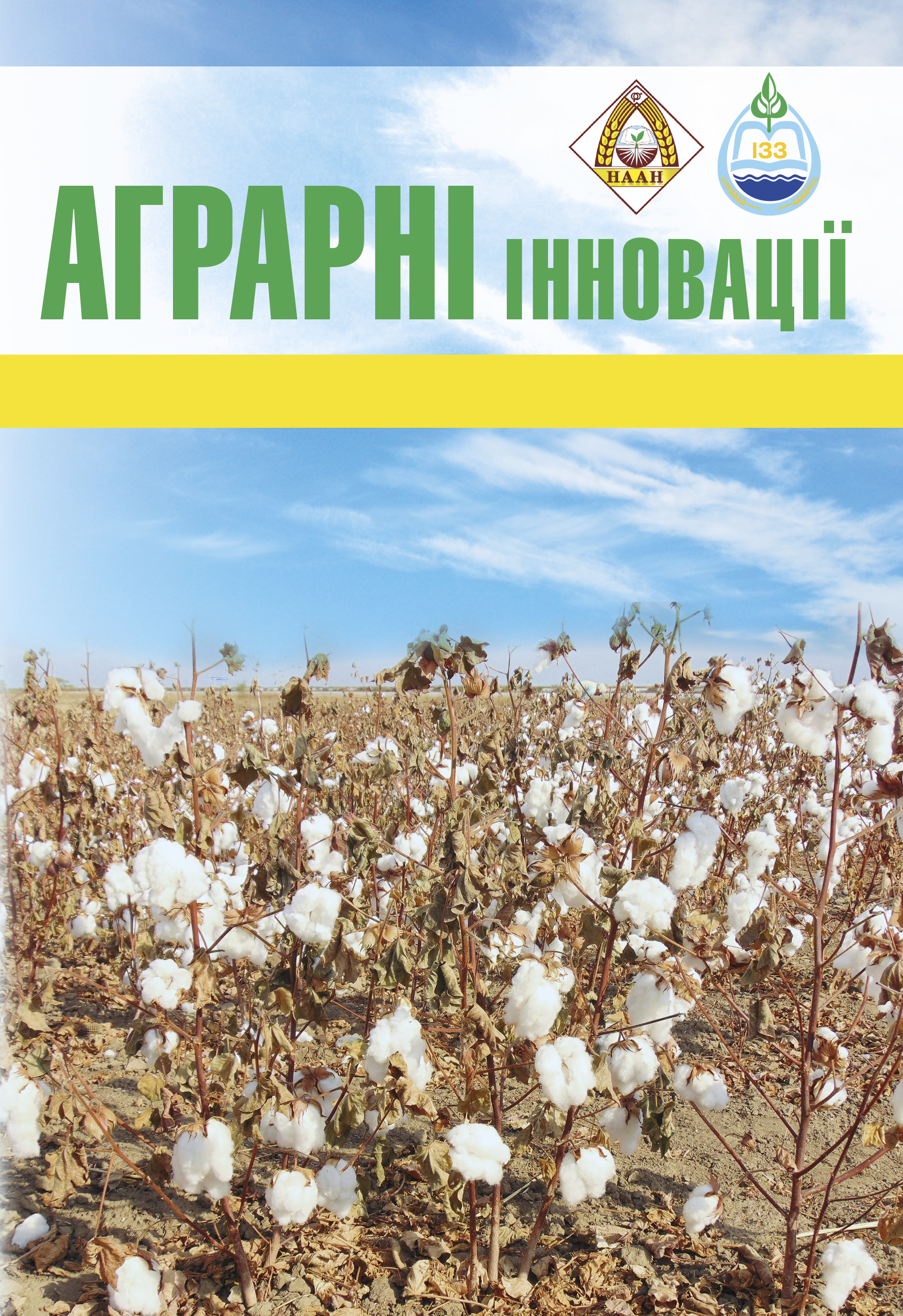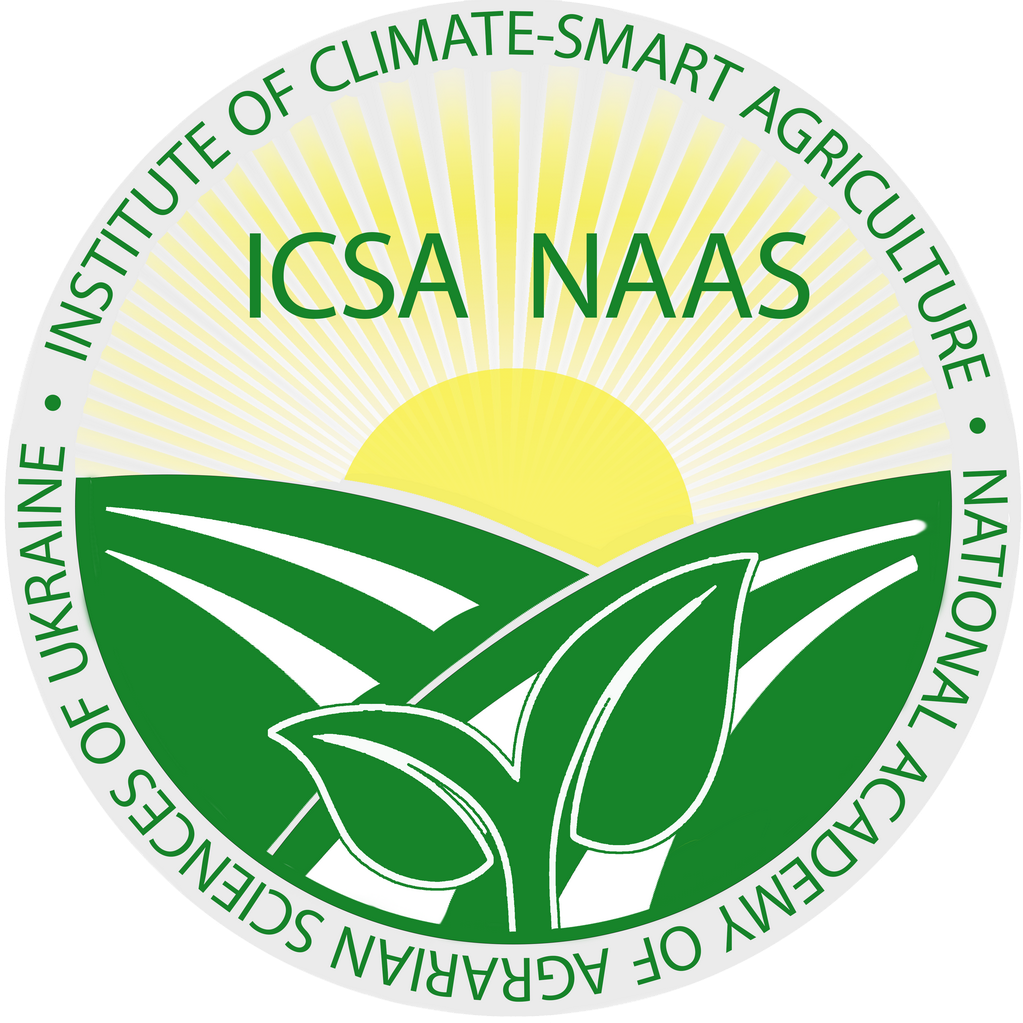The Influence of Plant Density and Foliar Fertilization with Micronutrients on the Yield of DEKALB Corn Hybrids in the Conditions of the Northern Steppe of Ukraine
Abstract
Purpose. To investigate the influence of plant den- sity and foliar fertilization with micronutrients on the grain yield of corn hybrids of different FAO groups in the condi- tions of the Northern Steppe of Ukraine. Methods. Field method – establishment of a three-factor field experi- ment in the conditions of the Northern Steppe of Ukraine.Laboratory method – to determine grain moisture, grain impurities, and contamination. Mathematical-statistical method – processing experimental data using analysis of variance to assess the significance of the influence ofindividual factors and their interactions on grain yield.Statistical significance was determined using the least significant difference (LSD05) criterion for each year of research. In addition, we calculated the share of influence of each factor and their interactions on yield formation, which allowed us to quantitatively assess the importance of each factor in the overall variation complex. Results.The article presents the results of three-year field studies examining the influence of plant density and foliar ferti- lization with micronutrients on the grain yield of DEKALB corn hybrids from different FAO groups. It was determined that the optimal planting density for the research zone is 60–75 thousand plants/ha, at which the most effective use of moisture, light, and nutrients by plants is ensured. Excessive thickening, especially under dry conditions (2024), signif- icantly reduced yield due to high intraspecific competition among plants. Under favorable moisture conditions (2022), the highest yield level was achieved at a plant density of 75 thousand/ha, while under extremely dry conditions (2024), it was 55 thousand/ha. High effectiveness of foliar fertilization with micronutrients was identified, particularly with the micronutrient Amino Ultra Corn, which provided a stable increase in yield by 11–15% compared to the control.The maximum levels of corn grain yield were determined when growing hybrids DKS 4712 (FAO 370) and DKS 5206 (FAO 420) at a plant density of 60–65 thousand/ha and con- ducting two rounds of foliar fertilization with the micronutri- ent Amino Ultra Corn – 9.21–9.24 t/ha. Similar yield levels were achieved by hybrids DKS 4109 (FAO 320) at a density of 70 thousand/ha and DKS 4391 (FAO 350) at a density of 65–70 thousand/ha in experimental variants with foliar fertilization using the same micronutrient – 9.18–9.20 t/ha.According to the results of variance analysis, it was estab- lished that the maximum influence on yield was exerted by the combination of three factors: hybrid × density × micro- nutrient, which justifies the importance of a comprehensive approach to corn cultivation technology, especially under modern climate changes. Conclusions. In the conditions of the Northern Steppe of Ukraine, corn grain yield largely depends on the complex combination of hybrid, optimal planting density, and foliar fertilization with micronutrients.The highest yield levels based on three years of research were achieved through two rounds of foliar fertilization with the micronutrient Amino Ultra Corn when growing hybrids DKS 4712 (FAO 370) and DKS 5206 (FAO 420) at a plant density of 60–65 thousand/ha – 9.21–9.24 t/ha, DKS 4109 (FAO 320) at a density of 70 thousand/ha – 9.20 t/ha, and DKS 4391 (FAO 350) at a density of 65–70 thousand/ha – 9.18–9.19 t/ha.
References
2. Вожегова Р. А., Лавриненко Ю. О., Марченко Т. Ю., Пілярська О. О., Скакун В. М. Удосконалення елементів агротехніки вирощування нових гібридів кукурудзи в умовах Центрального Лісостепу України. Вісник аграрної науки. 2023. № 11 (848). С. 5–10. DOI: https://doi.org/10.31073/agrovisnyk202311-01
3. Глупак З. І., Бутенко А. О. Урожайність гібридів кукурудзи на зерно залежно від групи стиглості та густоти стояння в умовах Лісостепу України. Вісник Уманського національного університету садівництва. 2022. № 2. С. 5–10. DOI: https://doi.org/10.32782/2310-0478-2022-2-5-10
4. Жемела Г. П., Бараболя О. В., Ляшенко В. В., Ляшенко Є. С., Подоляк В. А. Формування продуктивності зерна гібридами кукурудзи залежно від норми висіву. Вісник Полтавської державної академії. 2021. № 1. С. 97–105. DOI: https://doi.org/10.31210/visnyk2021.01.11
5. Цилюрик О. І., Тищенко В. О. Вплив густоти стояння рослин та рівня мінерального живлення на уміст хлорофілу в листках кукурудзи. Аграрні інновації. 2024. № 27. С. 133–139. DOI: https://doi.org/10.32848/agrar.innov.2024.27.20
6. Лавріненко І. Г., Лісовий В. М. Вплив густоти стояння на формування врожайності зерна кукурудзи. Сучасні аспекти і технології у захисті рослин : Матеріали VI Міжнародної науково-практичної інтернет-конференції, 26 листопада 2024 р. Полтава : ПДАУ, 2024. С. 102–104.
7. Мєлєшко І. О., Сидякіна О. В. Особливості мінерального живлення кукурудзи на зерно. Сучасна наука: стан та перспективи розвитку : Матеріали V Всеукраїнської науково-практичної конференції молодих вчених з нагоди Дня науки в Україні, 19 травня 2022 р. Херсон, 2022. С. 32–34.
8. Паламарчук В. Д., Демчук Б. С. Роль позакореневих підживлень у сучасних технологіях вирощування зернової кукурудзи. Сільське господарство та лісівництво. 2021. № 20. С. 60–76.
9. Сидякіна О. В., Іванів О. О. Сучасний стан і перспективи виробництва зерна кукурудзи. Таврійський науковий вісник. 2023. № 130. С. 225–234. DOI: https://doi.org/10.32851/2226-0099.2023.130.33
10. Ласло О. О., Олепір Р. В. Ефективність комплексного удобрення в технології вирощування кукурудзи. Український журнал природничих наук. 2025. № 11. С. 170–177. DOI: https://doi.org/10.32782/naturaljournal.11.2025.18
11. Іванишин О. С. Показники структури урожаю зерна кукурудзи залежно від гібриду, норми добрив та мікродобрива в умовах Лісостепу Західного. Молодий вчений. 2021. № 3 (91). С. 15–19. DOI: https://doi.org/10.32839/2304-5809/2021-3-91-4
12. Єрмакова Л. М., Крестьянінов Є. В. Урожайність кукурудзи залежно від удобрення та гібриду на темно-сірих опідзолених ґрунтах. Вісник Полтавської державної аграрної академії. 2016. № 4. С. 63–65.

This work is licensed under a Creative Commons Attribution 4.0 International License.






